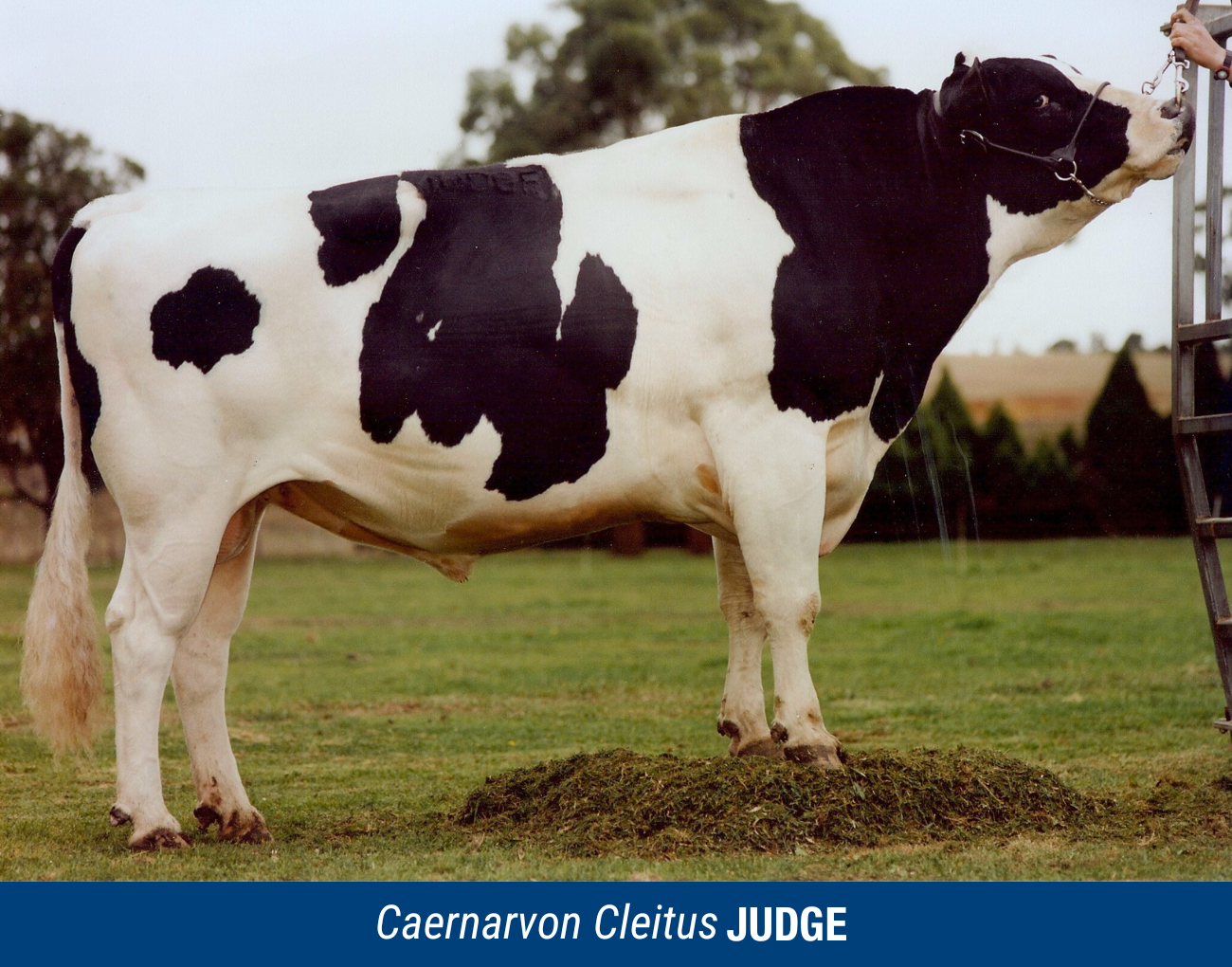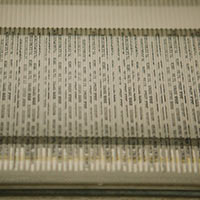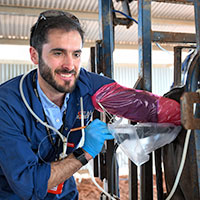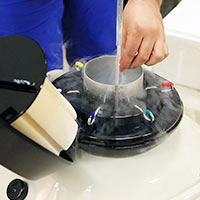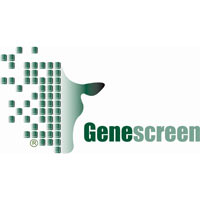History
The Beginning
Artificial breeding has a long history – it began with a group of Arabian horse breeders in the 14th century! Cattle were artificially inseminated successfully for the first time early in the 20th century in Russia, and in 1949 English research workers demonstrated the viable deep freezing of cattle semen. In Victoria a pilot unit was established by the Department of Agriculture at the State Research Farm at Werribee in 1945 using chilled semen. A commercial AB unit was established at Timboon in 1948 and another at Tatura 1949. They were self-contained, owned their own bulls and did all their own collecting, processing and inseminating. However, they were not viable and closed down at the end of 1949.
Industry Expansion
Insemination groups recognised the need for concerted thinking and established the Artificial Breeding Association (ABA) to negotiate with the Department on changes in the system. In 1956 it was realised that demand for semen would grow beyond the Department of Agriculture’s production capacity and proposed that the industry set up a cooperative.
Click on the link to the left to read all about it.
Foundation meeting
Accordingly, at 1:30 pm on July 17, 1958 a meeting commenced at the State Research Farm at Werribee. The chairman was Mr R. M. Noble. Also in attendance were Mr F. M. Reid (Deputy Director of Agriculture), Mr D. S. Wishart (Senior Veterinary Research Officer), Mr Senior (Registrar of Cooperatives), and over 250 interested persons. Mr Senior outlined the advantages of registering as a Cooperative Society. Mr Reid told the meeting the Government had agreed to provide a grant of £2000 ($4000) once support for the suggested cooperative was evident. The following minute was then recorded: It was further resolved on the motion of Mr H. J. Roberts, seconded by Mr J. Gardiner that in order to promote A.B. in Victoria a cooperative society be formed for the establishment and operation of a bull farm and semen distributing centre. The proposed rules were read and adopted. Capital would be raised by issuing $2 shares. The minimum subscription would be five shares and the maximum 1000 shares per member.
First board
Nominations were then called for members of the board. The rules provided it would consist of seven members. Nominations exceeded the number required and a ballot was conducted resulting in Messrs. J. D. Gardiner, W.R. Selzer, J. T. Reid, H. L. Martin, M. Noble, C. H. Chamberlain and J. Peach being duly elected. The meeting then closed
Victorian Artificial Breeders Cooperative
And so was formed the Victorian Artificial Breeders Cooperative Society Limited (VAB), later to become Genetics Australia Cooperative Limited in 1994 through the merger of VAB and the Queensland Government owned Wacol AB centre. Farmers showed renewed interest and confidence in artificial breeding after the establishment of VAB and cow numbers increased rapidly. In 1956 only 8000 cows had been inseminated in Victoria. By the time operations commenced at Parwan Park in 1961 that number had increased ninefold.
Horizon Genomic Program key to success
Genetics Australia has produced many of the Australian dairy industry’s leading bulls. The Horizon Genomic Program has been the key to our success. It started in the early 1960s. In those early years bulls (primarily Jerseys) were selected from the best studs in Victoria. Understandably, very few were sired by AI. A basic breeding value estimation system was used. It calculated breeding values for bulls using a contemporary comparison methodology. There were no cow breeding values.
Imported semen
During the 70s semen became available from the UK and Canada. USA semen wasn’t available but some Canadian bulls had US sires. Selection methods remained the same for over 20 years but efficiency improved as more and more AI animals appeared in the pedigrees of the Horizon Genomic Program bulls. Canadian semen was used in the breeding program with some success. Canadian bulls started appearing in the pedigrees of the Horizon Genomic Program bulls as breeders embraced this new source of genetics.
ABVs
The Australian Breeding Value (ABV) system was introduced in the early 1980s. It improved the accuracy of the evaluation system and interstate comparisons became possible. Cow ABVs were then introduced and for the first time we had an estimation of their genetic merit. Cow ABVs were utilised to evaluate potential young bulls using the parent average method.
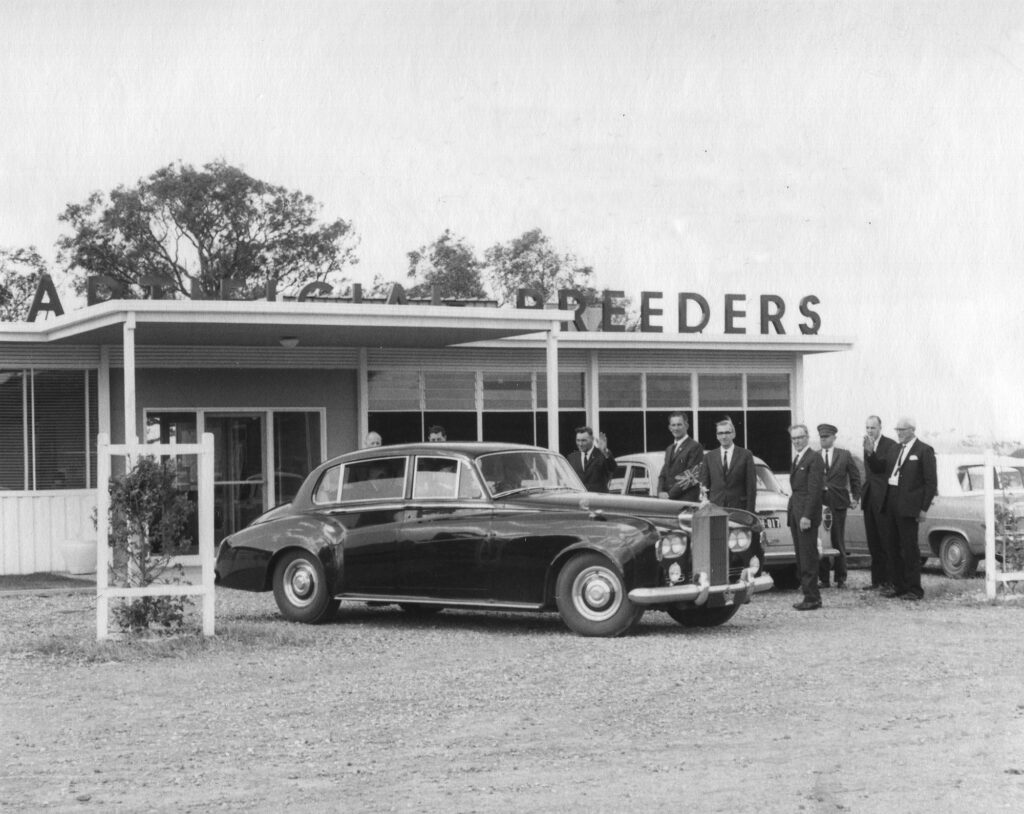
North American bulls
Imported genetics played an important part in the breeding program in the early 1990s. Following the success of the first live bulls (LALE, QEAR and PENN) imported from the US by a farmer syndicate, VAB imported large numbers of bulls from North America with some success. With the Australian payment system placing increased emphasis on protein, it made sense to import North American genetics to increase protein production in our domestic bulls. While initial importations proved successful, they were high cost and results declined with each subsequent importation. Bulls such as Holsteins JUDGE and SHOTIME and Jerseys DILLON, DUNCAN and ASTOUND proved very popular.
Creation and continued growth of Genetics Australia
Following the merger of Wacol AB and VAB to form Genetics Australia in 1994, Genetics Australia continued developing the Horizon Genomic Program, of all major dairy cattle breeds. Top Australian bull lists are now dominated by Australian proven bulls and Genetics Australia continues to achieve outstanding success with over 50% of the top bulls available in recent times.
We continue to focus on breeding bulls that maximise profitability under Australian conditions and Australian milk payment schemes heavily based on components rather than volume.
Commencing in 2000 we merged or acquired a number of retail service organisations such as Herd Improvers Australia, Timboon Herd Improvement and Western Herd Improvement. These have significantly added to the business of the Cooperative and our ability to directly service our members.
Australian bulls shine through
In the late 1990s, domestic bulls were proving competitive with the best offshore bulls. Australian breeders rose to the challenge, combining the best imported and local sires with strong performing Australian cow families to produce bulls that are best suited to our Australian dairy system. Bulls such as WINLUKE, ALLORA, DONANTE and INFORMER are great examples of what our Australian breeding program can produce

Strong R&D
During the 90s Genetics Australia established a fully functional IVF laboratory at Parwan Park South. Research into cloning produced Australia’s first cloned bull and cloned females. A recipient herd was established to implant research embryos.
Genetics Australia’s R&D focus continued in the exciting area of genetic markers with two project partners, the Dairy CRC and DPIV, producing promising results. We are deeply committed to a strong R&D program for the benefit of Australian dairy farmers.
Expansion
In 2020, Genetics Australia purchased Total Livestock Genetics (TLG), taking over the TLG trading name and relocating GA’s bull management, semen management and semen collection and production services to the TLG sites in Camperdown and Glenormiston in south-west Victoria.
The Parwan Park property at Bacchus Marsh, which had been the cornerstone of Australia’s artificial breeding industry for more than 60 years, was sold in 2021.
A new era
On July 1, 2023, Genetics Australia moved into an exciting new era as part of a Joint Venture with global herd improvement leader URUS. While continuing to trade as Genetics Australia and retaining the TLG brand, the Joint Venture opens up huge opportunities for local farmers to access new products and to reach into new international markets. URUS is based in the United States and is a global leader in products and services for dairy and beef producers for artificial insemination, genetics, reproduction, and farm management systems.
The Joint Venture strengthens Genetics Australia’s position as Australia’s leading artificial breeding supplier. The JV is 60 per cent owned by URUS and 40 per cent owned by GA and has access to the full suite of GENEX products and to the PEAK breeding program.
Remaining true to the founding vision
More than 60 years on, Genetics Australia remains true to the vision and aspirations of those who gathered at Werribee in July 1958. Their foresight led to improved profitability for generations of dairy farming families.
Genetics Australia continues at the forefront of technological developments in artificial breeding and herd improvement, and maintains a total focus on putting more dollars in the pockets of dairy farmers.


